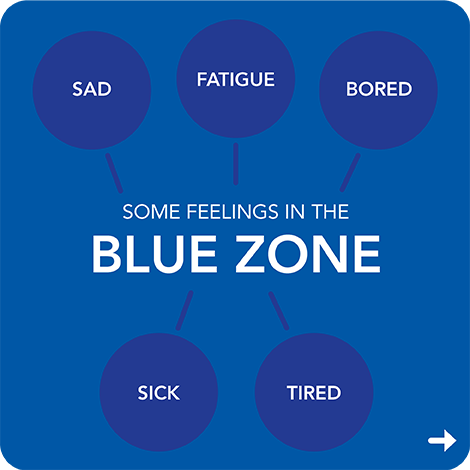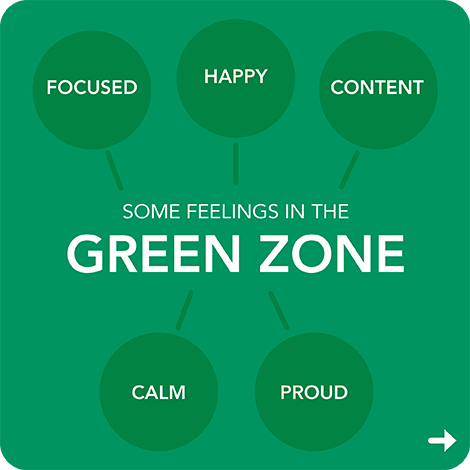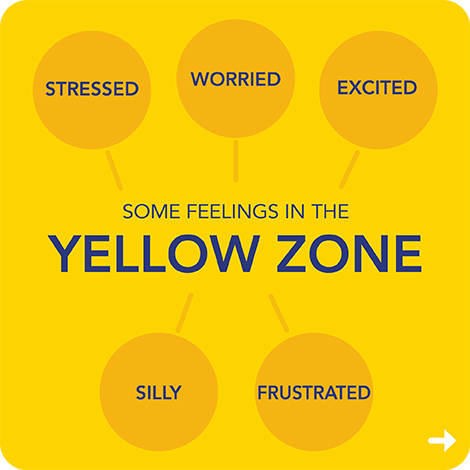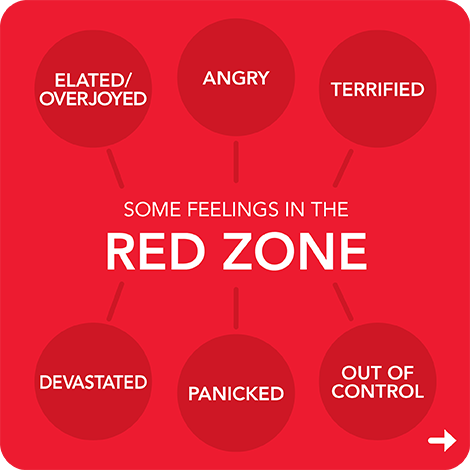Zones of Regulation
At Chew Magna Primary School, we use the Zones of Regulation with the children.
Why Teach Self-Regulation?
Regulation is something everyone continually works on whether we are aware of it or not. We all encounter trying circumstances that can test our limits. If we can recognize when we are becoming less regulated, we are able to do something about it to manage our feelings and get ourselves to a healthy place. This comes more naturally for some, but for others it is a skill that needs more attention and practice. This is the goal of The Zones of Regulation.
Sorting Our Emotions Into Four Zones
Feelings are complicated. They come in different sizes, intensities, and levels of energy that are unique within our brains and bodies. To make them easier to talk about, think about, and regulate, The Zones of Regulation organizes our feelings, states of alertness, and energy levels into four coloured Zones – Blue, Green, Yellow, and Red. The simple, common language and visual structure of The Zones of Regulation helps make the complex skill of regulation more concrete for learners and those who support them. We learn to regulate our Zones to meet our goals and task demands, as well as support our overall well-being.
The Four Zones
Blue Zone


The BLUE ZONE describes low states of alertness and down feelings, such as when a person feels sad, tired, sick, hurt, lonely, or bored. Our energy is low and our body is moving slowly when we are in the Blue Zone.
When in the Blue Zone we often need to rest and recharge to meet our goals. We can regulate by seeking (or co-regulate by offering) comfort, energizing, or resting. If we are feeling sick in the Blue Zone, we may need to rest. If we are feeling tired, we may need to energize (depending on the context). If we are feeling sad, we may need comfort. In all these situations, the common theme is noticing our lower energy and/or down feelings and options for managing them.
Green Zone


The GREEN ZONE describes a calm, alert state. We may be feeling happy, focused, content, peaceful, or calm in the Green Zone. The nervous system feels safe, organized, and connected in the Green Zone, helping us be primed to learn. However, we can learn in other Zones too.
When in the Green Zone we regulate by using tools and supports that keep us moving forward comfortably, helping us feel ready to go! In the Green Zone, we might regulate by choosing to eat a healthy snack, exercise, take a break, or pause for a mindful moment. These restorative actions help us proactively care for ourselves so we can move forward with ease.
Yellow Zone


The YELLOW ZONE describes when our energy is higher, and our internal state starts to elevate. Our emotions get a little stronger. We may be experiencing stress, frustration, anxiety, excitement, silliness, confusion, nervousness, be overwhelmed, or have the wiggles, when in the Yellow Zone.
In the Yellow Zone we may need to take action to regulate to manage our energy and feelings as they get stronger. For example, if we are feeling energetic at the lunch table it helps to use caution and take a deep breath, so we do not spill something. If we are feeling nervous before our performance, we can slow down our racing thoughts and speech by using a mindfulness tool. When we are frustrated, and pause to take notice, we can decide to take a break to collect ourselves before we say something we regret.
Red Zone


The RED ZONE describes a state of extremely high energy and intense, very overwhelming feelings. We may be in an extremely heightened state of alertness, potentially triggering our fight, flight, freeze or flee protective response. We may feel elated, euphoric, anger, rage, devastated, out of control, panicked, or terrified when in the Red Zone.
When in the Red Zone we might need to pause and assess if we need to regulate and gain a sense of control of our strong feelings and high energy. For example, if we are feeling angry it may help to pause and count to 10 before we act. If we are panicked, we can stop and use our self-talk to help us gain a sense of control of our thoughts in order to meet our goal. If we are elated, such as when a teammate scores the winning point, we might need to pause and take a big breath to regulate our impulse to run out on the field to celebrate if there is still time on the clock.
Please see here for a parent`s guide to the Zones of Regulation
If you would like more information about this, please contact your child`s class teacher.







 ↑
↑